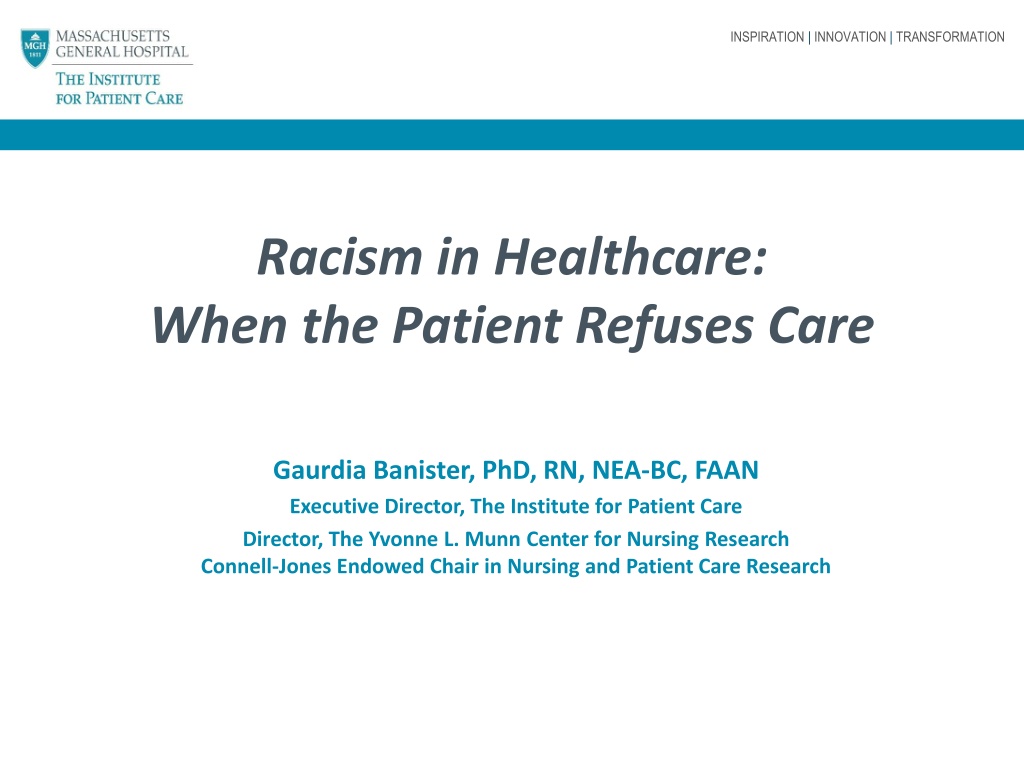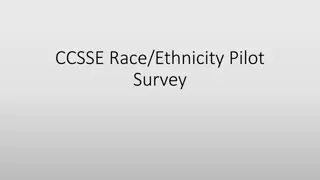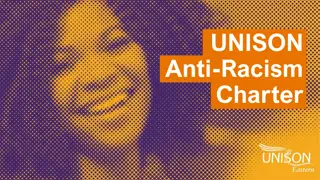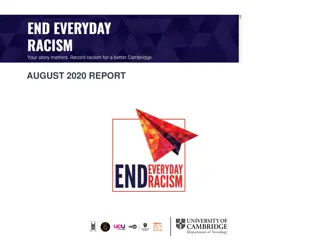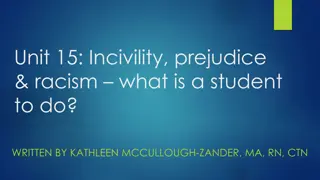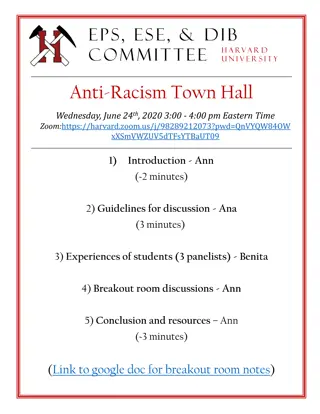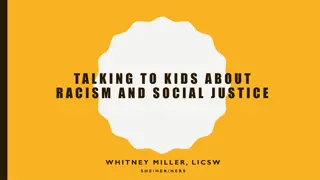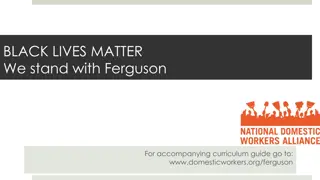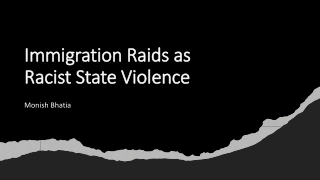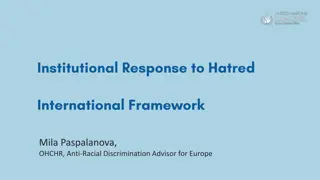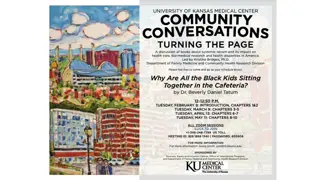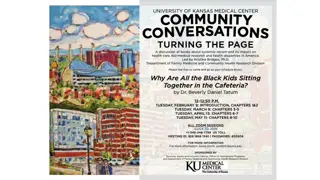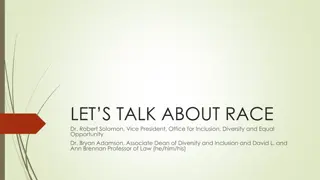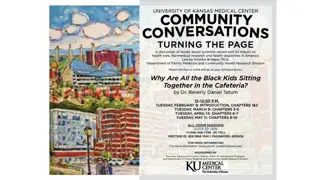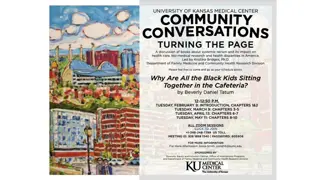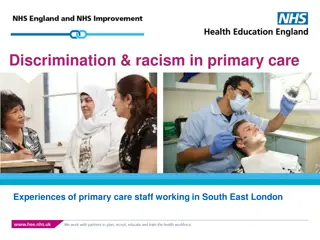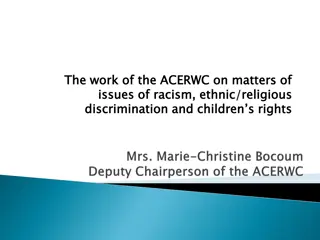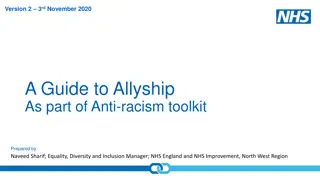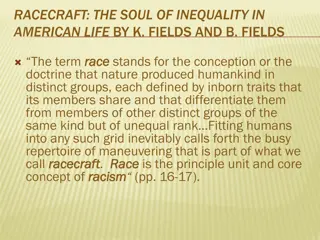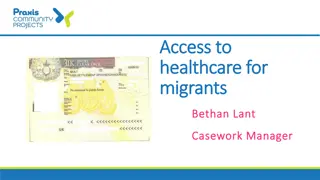Addressing Racism in Healthcare: A Comprehensive Overview
Explore the complex issue of racism in healthcare through a discussion on historical influences, ethical considerations, and patient refusal of care. Learn about organizational strategies, policy development, and the role of healthcare professionals in promoting patient accountability. Dive into the ethical principles for nurses and the American Medical Association's stance on physician-patient interactions regarding bias and discrimination.
- Racism in Healthcare
- Ethical Considerations
- Patient Refusal
- Organizational Strategies
- Healthcare Equity
Download Presentation

Please find below an Image/Link to download the presentation.
The content on the website is provided AS IS for your information and personal use only. It may not be sold, licensed, or shared on other websites without obtaining consent from the author. Download presentation by click this link. If you encounter any issues during the download, it is possible that the publisher has removed the file from their server.
E N D
Presentation Transcript
INSPIRATION | INNOVATION | TRANSFORMATION Racism in Healthcare: When the Patient Refuses Care Gaurdia Banister, PhD, RN, NEA-BC, FAAN Executive Director, The Institute for Patient Care Director, The Yvonne L. Munn Center for Nursing Research Connell-Jones Endowed Chair in Nursing and Patient Care Research
INSPIRATION | INNOVATION | TRANSFORMATION Objectives Review of Ethical Considerations Review of Historical Factors that have Influenced Racism in Healthcare Experiences of racism in the practice environment Identify organizational strategies that help identify and reduce behaviors Policy Development Patient Accountability Conclusion
INSPIRATION | INNOVATION | TRANSFORMATION A True Story
INSPIRATION | INNOVATION | TRANSFORMATION Ethics For Nurses The nurse s code of ethics has 9 main provisions added in 2015 by the ANA: 4 Principles of Ethics for Nursing: 1. Autonomy- recognizing each individual patient s right to self- determination and decision- making 2. Beneficence- acting for the good and welfare of others with kindness and charity 3. Justice- an element of fairness in all medical and nursing decisions and care 4. Nonmaleficence- to do no harm
INSPIRATION | INNOVATION | TRANSFORMATION American Medical Association s Code of Medical Ethics Derived from the Hippocratic Oath- physicians may not decline to accept patients because of race, color, religion, national origin, sexual orientation, gender identity, or any other bias that would constitute invidious discrimination. Factors that have guided physician-patient interactions when considering how to respond to bias or racism: Informed Consent- ethical and legal concept relating to medical decision-making Respect for persons empowers patients to make informed healthcare decisions Right to refuse unwanted medical care Provider respects patient autonomy and their right to determine what happens to them in accordance with the patients' personal values, health beliefs and goals Capacity- a person s ability to understand their medical situation and make an informed decision about care after being advised of the risks and benefits of a particular course of action
INSPIRATION | INNOVATION | TRANSFORMATION Historical Factors that have Influenced Racism in Healthcare No clear legal directive on the issue of hospitals accommodating patients racial preferences. Laws and legal doctrines operate as guidelines that inform the way hospitals and physicians' currently respond to a patients demand for or refusal of treatment by a physician of a particular race 1964 Civil Rights Act Law of Battery Emergency Medical Treatment and Active Labor Act (EMTALA)
INSPIRATION | INNOVATION | TRANSFORMATION Consequences of Racism in Healthcare Encounters in healthcare marked by racism and inappropriate behaviors are common and: Provide a threat to the provider-patient relationship Compromises the delivery and efficiency of care Impacts patient outcomes Effects the morale of the healthcare team and the individual provider well- being: Creates a hostile environment Increases stress Contributes to poor health of the individual or team Contributes to burnout Can lead to nurses leaving the profession
INSPIRATION | INNOVATION | TRANSFORMATION A True Story
INSPIRATION | INNOVATION | TRANSFORMATION Strategies to Address the Issues Professional educational programs : Trainings and workshops with active interventions that help develop the skills to manage/respond to discrimination On-line learning modules Case scenarios to provide opportunities to learn, practice, and rehearse Hospital institutions Organizational leadership and support Institutions have an ethical obligation to ensure the safety and well-being of clinicians and patients Should develop comprehensive policies and procedures that address discriminatory patient/family requests and demands Assist in establishing guidelines that support a team response Provide support for the targeted person or groups Communicate expectations around institutional values, commitment to diversity, and intolerance for patient conduct that is biased or harms staff Provide information and trainings for new employees and trainees during orientation
INSPIRATION | INNOVATION | TRANSFORMATION How Institutions Have Responded Recently revised the patient responsibility policy to state: We won t grant requests for care team members based on race, religion, ethnicity, gender, sexual orientation, gender identity, language, disability status, age, or any other personal attribute Training modules for new employees and trainees
INSPIRATION | INNOVATION | TRANSFORMATION How Institutions Have Responded Developed the ERASE framework Expect mistreatment will occur Recognize when it occurs Address the situation in real time Support the learner after the incident Establish and encourage a positive culture Training modules for new employees and trainees
INSPIRATION | INNOVATION | TRANSFORMATION How Institutions Have Responded Other tactics and strategies: Development of a decision tree in the emergency department for providers to consider when presented with patients requests for reassignment based on race or ethnic background that balances: Duty to provide care to racist patients Recognition of the harm to targeted providers by taking into account whether the patient is medically stable Consider not accommodating patients who are in stable condition who persist with reassignment requests based on bigotry Identify and address action steps or risk losing talented staff of color who refuse to be demeaned. Provide support to the provider/team targeted and allow debriefings on how to manage the issue should it occur again
INSPIRATION | INNOVATION | TRANSFORMATION MGH Strategies to Address the Issues Patient/Family/Visitor Code of Conduct: Responding to Disrespectful, Discriminatory, Disruptive, or Harassing Behaviors addresses discriminatory, disrespectful, disruptive, and harassing behaviors Sets response expectation of all workforce members (bystanders, leaders, not just targeted person) Commitment of support for targeted person and role of manager/chief
INSPIRATION | INNOVATION | TRANSFORMATION MGH Strategies to Address the Issues Introduces SAFER Model framework Speak up; Support the targeted workforce member Assess the situation, Address the behavior, and Access resources Focus on Mass General values Explain behavioral expectations Report the interaction and plan, and Reinforce behavioral expectations
INSPIRATION | INNOVATION | TRANSFORMATION MGH Strategies to Address the Issues (cont.) Diagram demonstrates SAFER model algorithm: Clarity on reporting, documentation, and involvement of Police and Security Expanded scripting in new guideline including provision of support Includes handout/poster Workflow diagram/algorithm
INSPIRATION | INNOVATION | TRANSFORMATION MGH Strategies to Address the Issues (cont.)
INSPIRATION | INNOVATION | TRANSFORMATION MGH Strategies to Address the Issues (cont.) There are multiple policies and practices at MGH that, through structural racism, have a disproportionate/negative impact on minority patients and employees. The 10-point plan creates a deliberate process to systematically identify such policies and practices and reconcile them.
INSPIRATION | INNOVATION | TRANSFORMATION Case Scenario How should providers respond when patients exhibit biased or discriminatory behavior? When a family requests a white nurse, I m sorry. Please do not touch my daughter. We would prefer a different nurse. What would you do?
INSPIRATION | INNOVATION | TRANSFORMATION Conclusion Cultural change is necessary to meaningfully address patient bias against providers. Healthcare organizations must acknowledge and address the prevalence and harm caused by biased patients Create a culture that normalizes reporting incidents of discrimination
INSPIRATION | INNOVATION | TRANSFORMATION Conclusion The emphasis on patient-centeredness has unintentionally emboldened a patient first approach at the expense of emotional or physical distress to providers. Healthcare organizations should carefully balance their duty to provide high-quality care and tend to the vulnerability of patients with their responsibility to cultivate a supportive, respectful work environment
INSPIRATION | INNOVATION | TRANSFORMATION References Chandrashekar, P., & Jain, S. H. (2020). Addressing patient bias and discrimination against clinicians of diverse backgrounds. Academic Medicine, 95(12S), S33-S43. Commodore-Mensah, Y., & Cooper, L. A. (2021). Reversing the Tide of Racial and Ethnic Disparities in Excess Deaths During the COVID-19 Pandemic. Annals of internal medicine Garran, A. M., & Rasmussen, B. M. (2019). How should organizations respond to racism against health care workers?. AMA journal of ethics, 21(6), 499-504. Olson, L. L., & Stokes, F. (2016). The ANA code of ethics for nurses with interpretive statements: Resource for nursing regulation. Journal of Nursing Regulation, 7(2), 9-20. Paul-Emile, K., Smith, A. K., Lo, B., & Fern ndez, A. (2016). Dealing with racist patients. New England J. Med., 374, 708. Prather, C., Fuller, T. R., Jeffries IV, W. L., Marshall, K. J., Howell, A. V., Belyue-Umole, A., & King, W. (2018). Racism, African American women, and their sexual and reproductive health: a review of historical and contemporary evidence and implications for health equity. Health equity, 2(1), 249-259. Reynolds, K. L., Cowden, J. D., Brosco, J. P., & Lantos, J. D. (2015). When a family requests a white doctor. Pediatrics, 136(2), 381-386. Sue, D. W., Alsaidi, S., Awad, M. N., Glaeser, E., Calle, C. Z., & Mendez, N. (2019). Disarming racial microaggressions: Microintervention strategies for targets, White allies, and bystanders. American Psychologist, 74(1), 128. Williams, K. E., Baskin, M. L., Brito, A. L., Bae, S., & Willett, L. L. (2021). Supporting Trainees by Addressing Inappropriate Behaviors by Patients. Southern Medical Journal, 114(2), 111-115. Winland-Brown, J. , Lachman, V. & Swanson, E. (2015). MEDSURG Nursing, 24 (4), 268-271.
